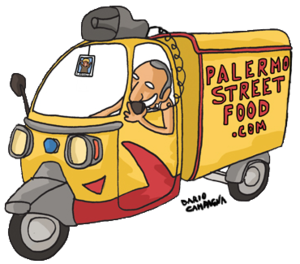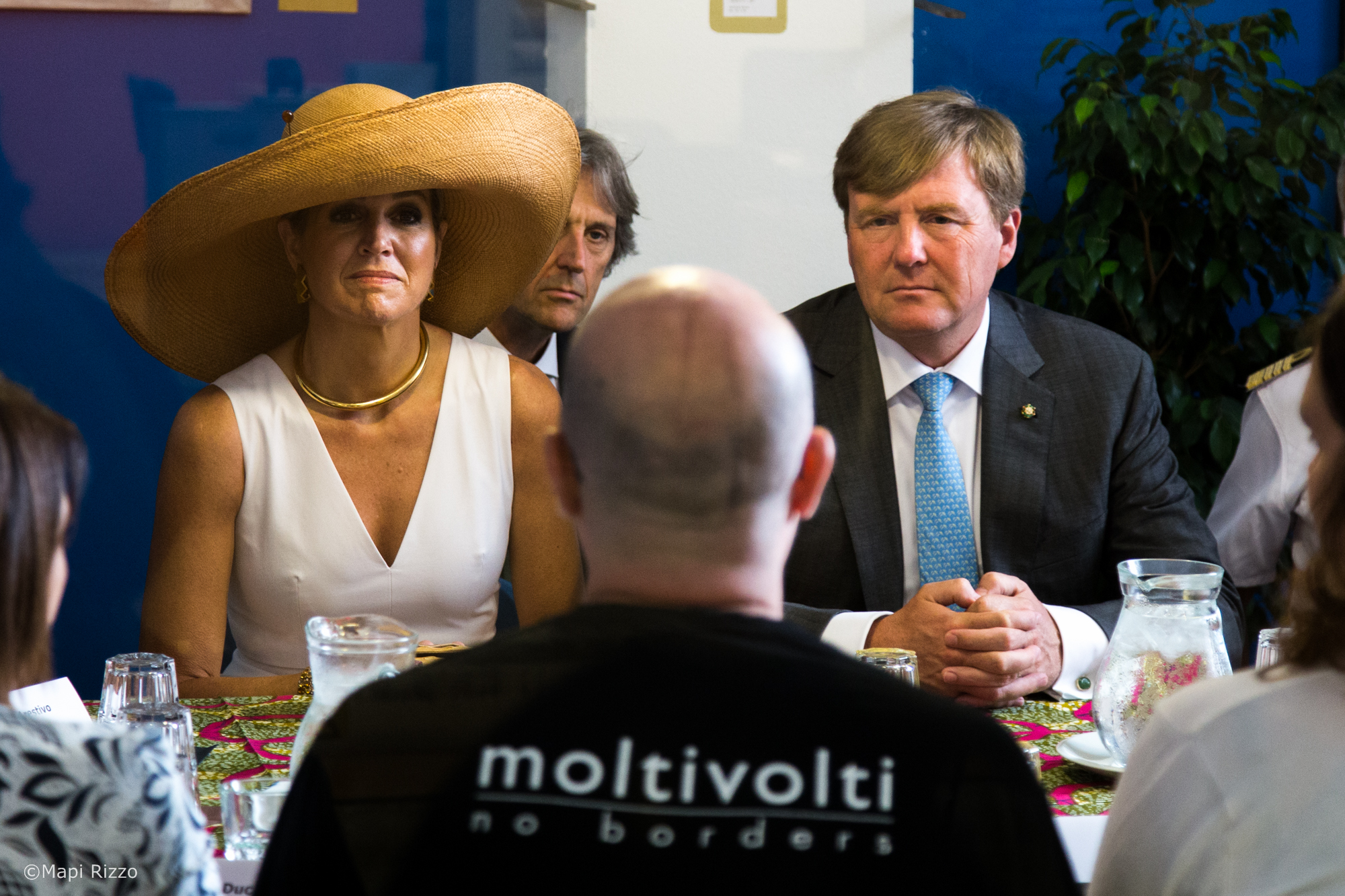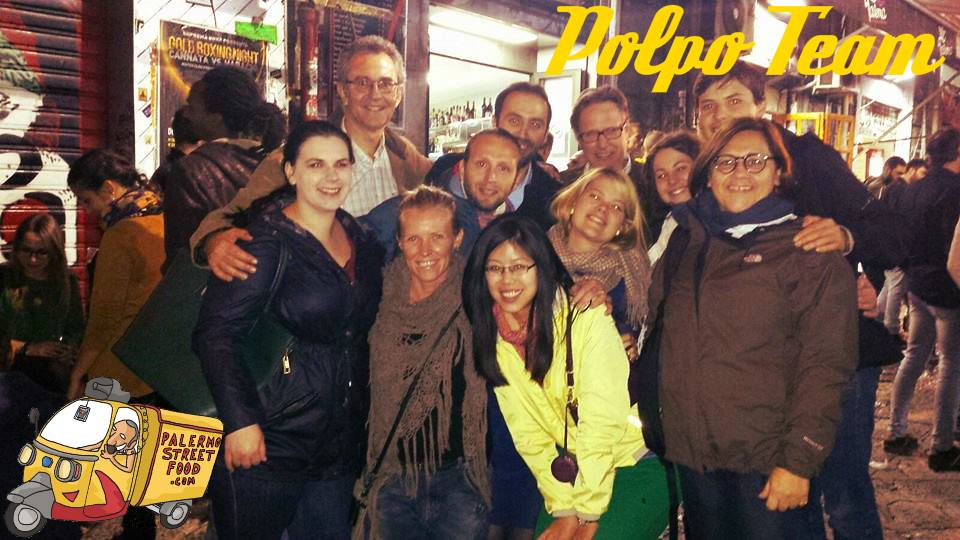King Willem Alexander and Queen Máxima came to visit Palermo on June 21, 2017. They were pleasantly surprised by Palermo's multicultural and diverse environment. They expressed their support for the city of Palermo in its efforts, helping immigrants and refugees who have escaped unlivable situations in other countries. The King and Queen visited Palazzo delle Aquile, I Quatro Canti, La Cattedrale, and the Palazzo dei Normanni.
The Queen and King of Holland with Mayor Leoluca Orlando of Palermo.
During their visit, they didn't miss Capo Market and obviously they ate some of our city's street food! In particular, they went crazy for le polpettine di pesce spada (small swordfish "meat" balls).
The King of Holland eating some street food in Capo Market in Palermo.
The Queen and King also found a moment during their visit to stop by Moltivolti, a co-working space in Ballarò. The were totally interested in their project and spent time with Claudio Arestivo, the co-founder of Moltivolti, talking to him about the challenges of his project.




























